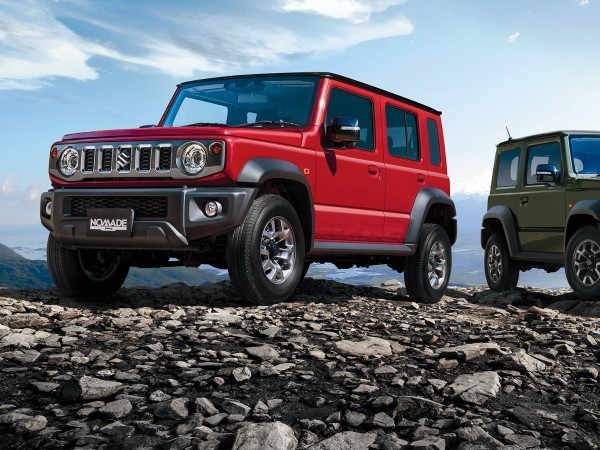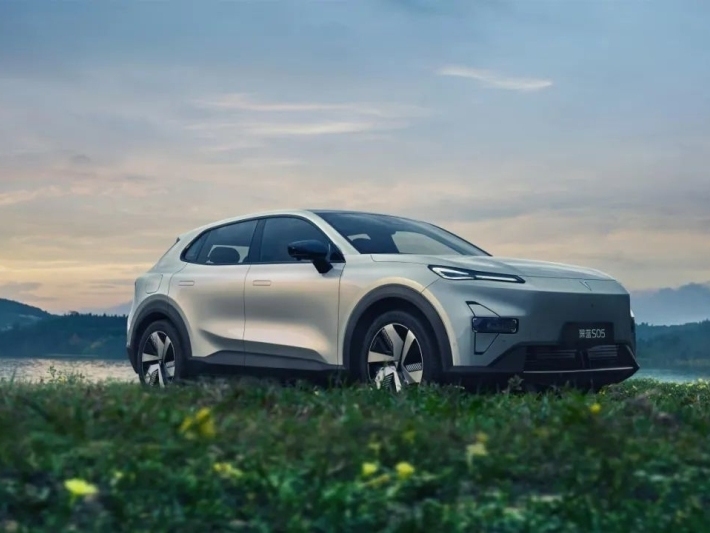Q
Where is the Suzuki jimny made?
The Suzuki Jimny, a classic compact off-roader, has its main production base at the Suzuki Iwata plant in Shizuoka Prefecture, Japan. This facility is responsible for manufacturing models destined for the domestic Japanese market as well as Europe, leveraging advanced manufacturing techniques and strict quality control standards to ensure vehicle reliability and durability. For the Malaysian market, the Jimny is primarily imported, although some models are also produced through local assembly (CKD) to meet regional demand. This approach not only reduces tariff costs but also enables a quicker response to local consumer preferences.
Since its initial launch in 1970, the Jimny has undergone several upgrades while maintaining its iconic body-on-frame construction, part-time four-wheel-drive system, and compact, agile dimensions. These characteristics allow it to excel in Malaysia’s challenging terrains, including rainforests and mountain roads, making it a popular choice among off-road enthusiasts. Notably, in 2023, the Jimny introduced a special edition model that further optimized its suspension system and exterior design, enhancing its competitiveness in this niche market.
As a small SUV that balances daily commuting with outdoor adventures, the Jimny continues to attract young consumers and off-road aficionados in the Malaysian automotive market, thanks to its unique positioning and affordable pricing.
Special Disclaimer: This content is published by users and does not represent the views or position of PCauto.
Latest Q&A
Q
How to check power steering fluid in Suzuki Swift?
To check the power steering fluid in Suzuki Swift, you can follow these steps. First, open the engine hood and find the power steering fluid reservoir, which usually has a clear indicator easy to find. Check the scale line on the reservoir to check whether the fluid level is within normal range, it should be between the upper and lower scale lines. If the fluid level is low, it's necessary to add the specified type of power steering fluid. Take note to avoid any impurities when adding. During the inspection, also observe the color and condition of the fluid, the normal power steering fluid should be transparent or light yellow, and free of impurities and strange odors. If the fluid has a deep color, strange odour, or impurities, it might imply that the fluid needs to be replaced.
Q
What's the specification of the engine of Suzuki Swift?
The Suzuki Swift is commonly equipped with an engine displacement of 1.2 liters or 1.4 liters. The specific engine specifications may vary due to different model years and configurations.
Q
What's the weight of the Suzuki Swift?
The weight of the Suzuki Swift typically ranges from 900 to 1100 kilograms, depending on the model configuration and version. Different configurations may differ in the materials and equipment of some parts, thus affecting the overall weight of the car.
Q
How much horsepower does the Suzuki Swift produce?
The horsepower of the Suzuki Swift typically varies depending on the specific configuration and model, with common versions producing around 100 horsepower.
Q
What is the fuel consumption of the Suzuki Swift?
The fuel consumption of the Suzuki Swift varies depending on the specific model, engine configuration, and driving conditions. Generally speaking, common versions consume about 6 liters per 100 kilometers in city driving, and about 5 liters on the highway. However, actual fuel consumption may be influenced by a variety of factors including driving habits, road conditions, and vehicle load.
Q
What is the tire pressure of Suzuki Swift?
The tire pressure of Suzuki Swift typically ranges between 2.2 and 2.5 bars. However, the exact figure can vary depending on factors such as the specific model of the vehicle, tire specifications, vehicle load, and driving conditions. In general, you can find accurate information about tire pressure of your specific model in the vehicle's user manual.
Q
How many setas does the Suzuki Swift have?
The Suzuki Swift is usually a five-seater model.
Q
Where is the fuse box of Suzuki Swift?
The fuse box of Suzuki Swift is typically located under the dashboard on the driver's side or in the engine compartment. The fuse box under the driver's side dashboard may require the removal of some coverings to be found; the one in the engine compartment usually have clear markings. However, the specific location may vary slightly depending on the model and production year.
Q
How to replace the wiper blades of Suzuki Swift?
In Malaysia, to replace the wiper blades of Suzuki Swift, first lift up the wiper blades, press the button at the connector, and pull the old wiper blade outwards. Then align the interface of the new wiper blade with the slot, insert and secure it, ensuring that the installation is firm. It is important to choose wiper blades suitable for the Suzuki Swift model, and be careful not to damage the vehicle parts during the operation.
Q
How to check the transmission fluid of Suzuki Swift?
The method to check the transmission fluid of Suzuki Swift is as follows: First, park the vehicle on a flat ground and make sure the engine is off and has been cooled down. Next, open the engine hood and find the transmission dipstick, pull it out and wipe it clean. Then, reinsert the dipstick and pull it out again, observe the scale on the dipstick, the fluid should be between the upper and lower scales. If the fluid turns black or has a strange smell, it may need to be replaced. It should be noted that there may be slight differences in different years and configurations of Suzuki Swift.
Related Q&A
Q
How heavy is a Suzuki Jimny?
The Suzuki Jimny, a classic compact off-roader, varies in weight depending on the model and configuration. According to official data, the currently available fourth-generation Jimny (2023 version) in its three-door variant has a kerb weight ranging from approximately 1,060 to 1,110 kilograms. Meanwhile, the recently launched five-door long-wheelbase version sees an increase in weight due to its extended body and upgraded features, bringing its weight to around 1,190 to 1,210 kilograms. The exact figures depend on factors such as the drivetrain configuration (two-wheel or four-wheel drive), optional packages (like metal bumpers or roof racks), and additional equipment.
The Jimny's lightweight design benefits from its body-on-frame structure and ladder frame. This configuration not only ensures off-road rigidity but also effectively controls weight, granting it excellent maneuverability and fuel efficiency in rugged terrains—particularly suitable for Malaysia’s mountainous landscapes and rainforest traversing needs.
In terms of power, the Jimny is equipped with a 1.5-liter K15B naturally aspirated engine that pairs efficiently with the ALLGRIP four-wheel-drive system. Although its power figures may not be particularly impressive, the lightweight body allows it to deliver sufficient traction and recovery capability. Notably, the Jimny's popularity in the Malaysian market is closely linked to its low maintenance costs and high modification potential. Many owners opt to add off-road skid plates or rooftop tents, which can increase the vehicle's weight by an additional 50 to 100 kilograms. It is advisable for owners to be mindful of the vehicle's weight limits when modifying to ensure safety.
Q
How to connect phone to Suzuki Jimny?
The steps to connect your phone to Suzuki Jimny are typically as follows: Firstly, turn on the car's Bluetooth, which can usually be found in the settings menu. Then turn on the Bluetooth on your phone, find "Suzuki Jimny" in the list of available devices, and click to pair. Once the pairing is successful, the phone and the vehicle will be connected and you can use the related functions of the phone via the car system, such as making calls, playing music, etc.
Q
What type of car is the Suzuki Jimny?
The Suzuki Jimny is a compact, hardcore off-road vehicle. It is known for its small size, flexibility and excellent off-road capabilities. Its appearance features uniqueness, with a compact body and strong lines. In terms of power, it usually provides sufficient torque output to cope with various complex road conditions. The interior configuration is practical, focusing on functionality. In Malaysia, the Suzuki Jimny is loved by many consumers, especially those who pursue individuality and enjoy outdoor adventures.
Q
How many cylinders of Suzuki Jimny?
The Suzuki Jimny typically features a 4-cylinder design. In the Malaysian car market, the Suzuki Jimny is favored by some consumers for its compactness, flexibility and off-road capabilities. The 4-cylinder configuration provides a balanced power output and fuel economy for the vehicle.
Q
What is the price of Suzuki jimny 2023?
The price of Suzuki Jimny 2023 in Malaysia may vary depending on the configuration and sales region. Generally, its price is in a certain range of RM 158,900 to 168,000. It's noted that the actual price may be affected by factors such as market supply and demand, promotional activities, etc.
Related News

Jimny Nomade Japan released, over 50,000 orders in 4 days, consumers need to wait for 3.5 years
MichaelFeb 5, 2025

Suzuki Jimny Arctic Launch: Limited Time Offer to Save 7000 Ringgit!
Kevin WongNov 18, 2024

Getting More Expensive, 2024 Suzuki Jimny Starts at RM 174,180. Is it a Financial Wizard?
LienApr 18, 2024

Mazda Plans to Launch CX-20 in Southeast Asia to Compete with Toyota Yaris Cross
RobertMar 20, 2025

Which vehicles will make their debut at MOTOR SHOW 2025?
WilliamMar 6, 2025
View More















